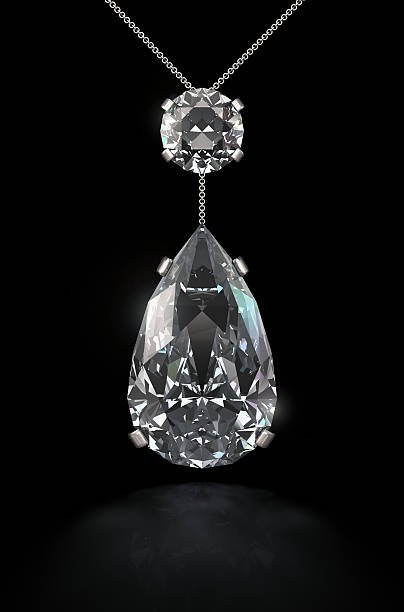Clarifying Diamond Clarity All Entries

The brilliant sparkle of a diamond can fan the flames of romance and keep it burning all lifetime long. Like timeless romantic tales, the tale of diamonds includes chapters on pressure and time, chemistry, and circumstance. As time goes by and the pressure surrounding the diamond alters the chemical composition it affects the "four c's" of diamond clarity. These are cut, color, clarity, and carat. Each of these ensures that each diamond is unique and special. Clarity is considered one of the most important determinations of a diamond's prestige and value.
The Clarity Scale
There are 11 grades of clarity on the GIA scale ranging from flawless to I3 which has obvious inclusions that can be seen with the naked eye. The closer the diamond is to flawless, the more valuable the diamond will be within the marketplace.
Flawless (FL) - Flawless diamonds have no inclusions or blemishes that can be seen even when the diamond is placed beneath 10x magnification. These diamonds are incredibly rare with less than 1 in every 5,000 diamonds earning this certification.
Internally Flawless (IF) - Similar to flawless diamonds, internally flawless diamonds do not have any inclusions visible at 10x magnification. However, they may have slight blemishes on the surface. These blemishes are often created during the polishing of the facets. Combined, less than 2 of all diamonds have a clarity of either flawless or internally flawless.
Minor Inclusions (VVS1, VVS2, VS1, VS2) - Diamonds graded as VVS1 to VS2 may have inclusions that are visible at less than 10x magnification. The smaller the inclusion and the more difficult to see, the higher the diamond clarity and value of the diamond. Globally, about 20% of all diamonds will have minor inclusions that place them within this category on the diamond clarity spectrum. While those with VVS1 or VVS2 ratings are typically used for diamond jewelry, many VS1 and VS2 grades are used for industrial purposes.
Noticeable Inclusions (SI1, SI2) - Noticeable inclusions are those which are easily discovered by 10x magnification or less. About 25% of all diamonds found in nature are graded as SI1 or SI2. While some are included in jewelry, they are more commonly used in industrial applications.
Obvious Inclusions (I1, I2, I3) - Obvious inclusions include all flaws and blemishes that can be seen without the assistance of magnification. Over 50% of diamonds found in nature are classified as I1, I2, and I3 because they have visible carbon spots, cloudy surfaces, fractures, or crystals within the matrix. This makes this category the most common diamond grade in the world. The vast majority of I clarity diamonds are unsuitable for jewelry and are instead used for industrial purposes.
What Causes Common Inclusions & Flaws
Inclusions are often caused when foreign material contaminates the diamond crystal or when the diamond is damaged during the cutting and polishing process. Common inclusions include:
Bearded Girdle - These are small fathers that emanate from the edge of the stone where it was cut.
Bruises - These often occur at facet junctions followed by blunt force impact.
Cavities - These are sharp, angular openings which often occur during polishing or when the diamond is forced out of the setting.
Crystal - When a mineral crystal is formed within the diamond, this creates a blemish that can often be seen without the need for magnification.
We invite you to visit Ralph Mueller & Associates or to give us a call with your questions about diamond clarity at 480-949-9229. We will be happy to clear the air for you and help you find the perfect diamond for your future.